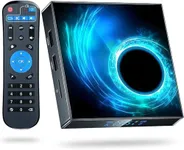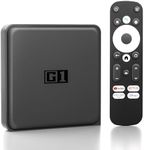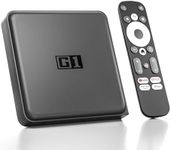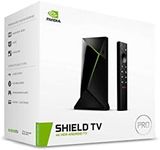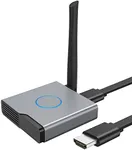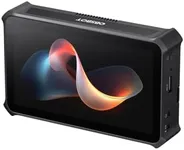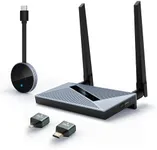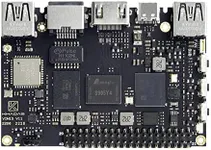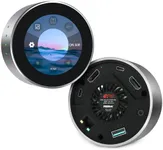Buying Guide for the Best Android Boxes
When choosing an Android TV box, it's important to consider your specific needs and preferences. Android TV boxes can turn any TV into a smart TV, allowing you to stream content, play games, and use apps. To make the best choice, you should understand the key specifications and how they impact your experience. Here are the main specs to consider and how to navigate them.Processor (CPU)The processor, or CPU, is the brain of the Android TV box. It determines how fast and smoothly the device can run apps and stream content. A more powerful processor will provide a better experience, especially for high-definition streaming and gaming. Processors are often divided into quad-core, octa-core, and higher. For basic streaming and casual use, a quad-core processor is usually sufficient. For more demanding tasks like gaming or 4K streaming, an octa-core or higher processor is recommended.
RAMRAM (Random Access Memory) is crucial for multitasking and smooth performance. It allows the device to handle multiple apps and processes simultaneously. Android TV boxes typically come with 2GB, 4GB, or more RAM. For basic streaming and light use, 2GB of RAM may be adequate. However, for a smoother experience, especially if you plan to use multiple apps or play games, 4GB or more is preferable.
StorageStorage capacity determines how much content and how many apps you can store on your Android TV box. Storage is usually measured in gigabytes (GB) and can range from 8GB to 64GB or more. If you plan to stream content and use a few apps, 16GB of storage might be enough. For those who want to download a lot of apps, games, or store media files, 32GB or more is recommended. Some devices also support expandable storage via microSD cards or USB drives.
Operating System (OS) VersionThe operating system version affects the user interface and compatibility with apps. Newer versions of Android offer better performance, security, and features. Android TV boxes typically run on Android TV OS or a customized version of Android. It's best to choose a device with the latest OS version to ensure you get the latest features and app compatibility. However, even slightly older versions can still provide a good experience if they meet your needs.
ConnectivityConnectivity options are important for ensuring your Android TV box can connect to the internet and other devices. Key connectivity features include Wi-Fi, Ethernet, Bluetooth, and USB ports. Wi-Fi is essential for wireless internet access, while Ethernet provides a more stable wired connection. Bluetooth allows you to connect peripherals like keyboards, mice, and game controllers. USB ports are useful for connecting external storage or other accessories. Consider your setup and choose a device with the necessary connectivity options.
Video and Audio OutputThe video and audio output capabilities determine the quality of the content you can watch and listen to. Look for support for high-definition (HD), Full HD, or 4K resolution, depending on your TV's capabilities. Higher resolutions provide better picture quality. Additionally, check for audio output options like Dolby Digital or DTS for enhanced sound quality. If you have a high-end TV and sound system, choose a device that supports 4K and advanced audio formats. For standard setups, HD or Full HD support may be sufficient.
Remote Control and User InterfaceThe remote control and user interface affect how easy it is to navigate and use your Android TV box. Some devices come with simple remotes, while others offer more advanced remotes with voice control and additional features. A user-friendly interface makes it easier to find and use apps and content. Consider what type of remote and interface you prefer. If you value convenience, look for a device with a well-designed remote and an intuitive user interface.
